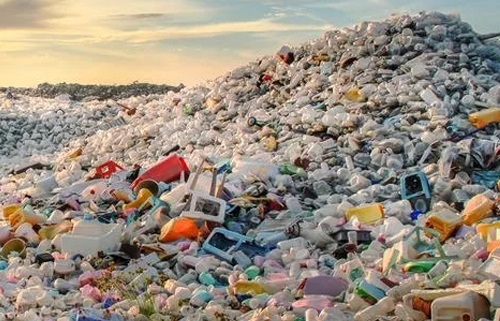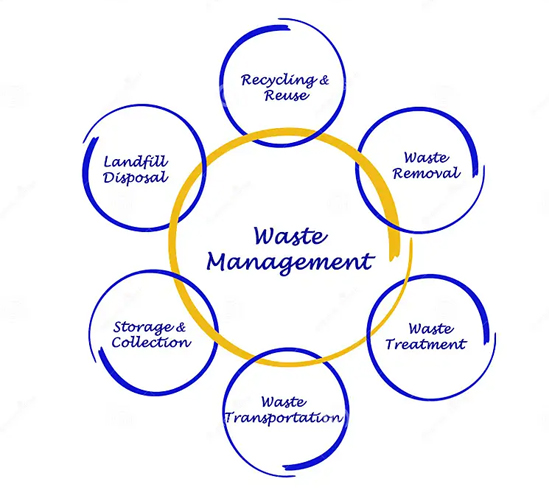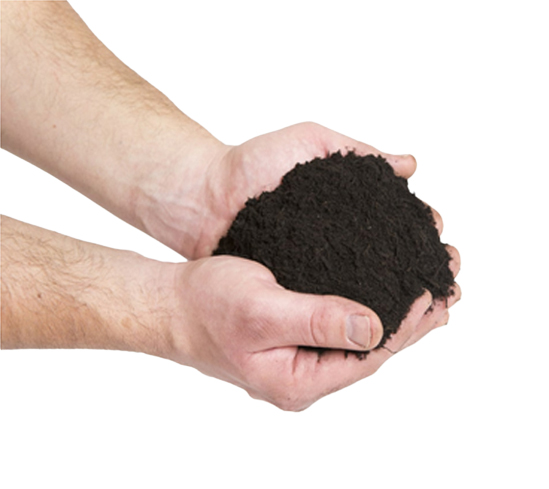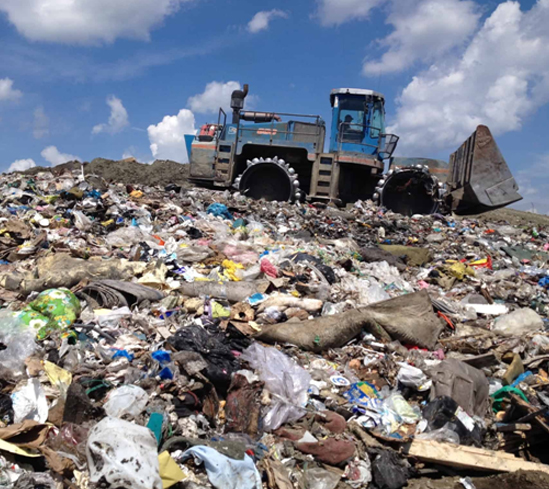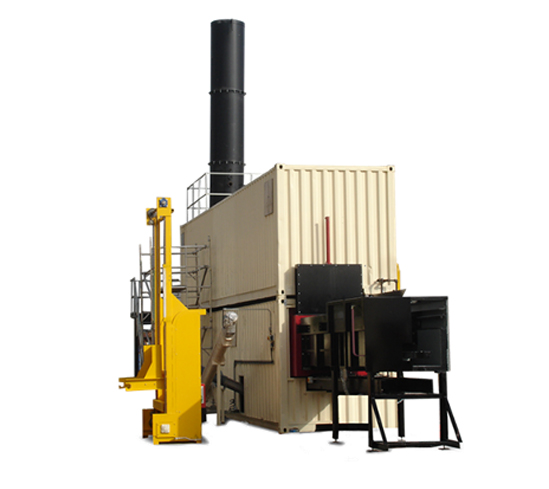We can keep the earth clean
The earth is our only home or the only place we can stay without wearing oxygen tanks to stay alive and it’s been inhabiting humans for millions of years as well as other creatures. But then, these other creatures aren’t the problem here, humans are, with carbon emissions from our factories, nuclear weapons and machines, garbage littered on the land and in the sea, heavy machinery, and so on, we are gradually killing the earth.Before I go on, let me shed more light on what the word “waste” means, you could know what it means as an adult but what about the kid reading about pollution for the first time, so, here goes…
What is waste?
Wastes are materials, substances, or by-products that are no longer wanted or usable.
Examples of waste include smoke, carbon emissions, radioactive waste, medical waste (collectively known as hazardous waste), household trash (collectively known as municipal solid waste), wastewater which includes feces and urine, and others.
Humans produce billions of tons of waste annually, even though there are laws and policies to managing waste but everything just has to be wrapped in plastic or emit smoke. Although these laws regarding waste management are being obeyed it is not enough to limit the amount of waste being generated but the waste management practices are surely working.
There’s been a massive awareness campaign on pollution and waste management over the years, we know of Greta Thunberg the Swedish child activist, the billionaire Bill Gates, and others who are working hard to save our planet from pollution and impending doom. In a bid to manage these wastes, technologies have been designed as well as other practices to maintain waste and overall pollution.
There are different types of waste management, which have been outlined in this article along with their specific details and examples, this is to create further awareness on pollution and waste management and we at Study Abroad Nations are a part of this fight. You may also use this article as a reference for a project, homework, or essays concerning pollution and waste management practices.
Just in case you do not know what “waste management” means, here goes…
What is Waste Management?
Waste management is activities, actions, and practices designed or set in place to manage waste from its inception to its final disposal.
The benefit of waste management includes a better environment, pollution is reduced, creates employment, conserves energy, and helps make a difference.
In a bid to spread these activities, actions, and practices to everyone awareness campaigns have been set up and now you can see them on the internet, on social media platforms, the news, and so on. Also, to make people actually practice these waste management activities some countries made it rewarding.
For example, you get paid in Germany when you recycle plastic, they have non-hazardous recycling machines located in strategic places in the country and when you recycle the plastic you get rewarded, there and then.
Nike, the prestigious shoe company, is now making shoes using recycled plastic, and they claim it is cheaper and also has as much quality as it is comfortable to wear. You can use stuff like bale arm crates to collect plastic waste and sell or exchange them for something valuable to you.
Another company recycles plastic to make clothes for people to buy and wear at a much cheaper rate and also claims to be of top quality. These practices have really helped in reducing plastic waste around the planet thereby helping to keep our environment clean.
Mind you, plastics aren’t the only waste but they are the most used making it the most waste we see around, and next is smoke then household waste. Whichever the waste may be, the types of waste management practices below have proved effective in keeping pollution at bay.
Types of Waste Management
Below are the effective types of waste management that everyone can practice in helping to make the world a better place to survive in:
Recycling
Composting
Landfills
Incineration
Plasma Gasification
Pyrolysis
Avoiding or Minimizing Waste
Recycling
This is one of the types of waste management practices and probably the most efficient one that involves the process of converting waste materials into new, reusable products. In the recycling process, discarded materials or waste such as plastic are exposed to extreme heat temperatures or shredded and then used to make something else that is useful.
The major reasons for recycling are to reduce the size of the waste and the space they consume, reduces the use of raw materials, bringing new products to life using old materials, reduces air and water pollution, lower greenhouse emissions, and preserves natural resources for future use. The recycling process has different methods: physical reprocessing, biological reprocessing, and energy recovery.
Examples of materials that can be recycled are solid waste such as paper, aluminum, bulbs, inkjet cartridges, metal cans, batteries, etc., and organic waste such as dead plants, food scraps, etc. which are recycled or decomposed into organic matter for agricultural uses. This is on its own a type of waste management.
Composting
Composting is one of the types of waste management practices and it is almost like recycling except that it doesn’t involve a physical process, it is all chemical and biological. It totally happens on its own with just the action of oxygen and other natural gases reacting on the waste product.
Composting is a natural and easy non-biodegradable process that turns organic wastes into nutrient-rich food for plants and it is the best type of waste disposal it is cheap, reliable, and healthy for the environment. The only problem with composting is that it is slow and takes up a lot of space but regardless many homes and even countries are embracing it to curb waste.
In some countries, instead of using plastic cups and straws for ice creams, they use leaves and straws made out of wood. That way, the waste gets to decompose on its own after usage and serves as a nutrient for the soil.
Examples of compost waste are plant and garden remains such as fallen leaves, rotten fruits, etc. paper, food scraps, and general kitchen waste. Making products wrapped with bio-degradable materials is a good way to control plastic waste since almost everything is wrapped in plastic it would be a stepping stone if this method is adopted.
Landfills
Landfills are among the types of waste management and it is the most popular method of discarding waste. Just as the name implies – landfills – are the process of burying waste under the soil or left to pile in heaps. This method of waste disposal is even being reconsidered because of the dangers it poses, although before the waste is buried underneath the ground, they go through a process that eliminates the smell and dangers it is still ineffective.
Landfills as one of the types of waste management pose certain health and environmental issues due to the significant presence of methane and other landfill gasses that causes many contamination issues. These contaminations pollute water and air which in turn affects the environment severely and proves fatal to the lives of humans and animals. It also takes up a lot of space.
Landfills are also known as dumping sites, garbage ground, tip, rubbish dump, etc. which are sites specifically designed to dump garbage, it is the oldest form of garbage disposal and also the most common. You may have seen some of these garbage sites around.
Incineration
Incineration is one of the types of waste management and simply means burning at extreme temperatures. This method of waste disposal is when solid waste materials are exposed to extreme heat temperatures and they are done at specific places such as factories. When solid waste is incinerated they shrink, they become way smaller than their original size while some may even become ash and disposed of on land.
The ones that can’t turn into ash are already way smaller than their original size and just buried underground – as in landfill – this way, they don’t take up space and can cause little to no contamination of the environment. The conversion of incinerated waste materials are heat, gas, steam, or ash, this is usually the final stage of an incinerated waste product.
Wastes that can be incinerated included plastic, paint scraping, hospital waste, contaminated water, wood, cardboard, sludge oil.
Avoiding or Minimizing Waste
Yes, this is absolutely another method of waste management and it works. It is already self-explanatory but for the sake of a few people, here goes…
This method of managing waste is much easier, it is simply reducing the creation of waste materials thereby reducing the amount of waste going to dumping sites.
Avoiding or minimizing waste also involves when we as individuals reduce the amount of waste we produce from making products and even in homes, instead of throwing your plastics away and going to buy new ones, wash or mend the old ones and keep using them, that’s avoiding and minimizing waste. Instead of factories using fresh, raw materials to make new products, they can easily recycle old materials and reuse them.
Avoid disposing of old things and going for the same thing as a new one, manage waste by reusing the older materials, mend them if they are mendable, or recycle them if need be. This will help in avoiding and minimizing waste and making our environment waste-free.
This brings an end to the types of waste management, you have had a knowledge boost by learning of these disposal methods. You can go on to teach your children, use it in class as a teacher, use it as a project topic as a student, for assignments, and essays.
The most effective types of waste management are composting and recycling, they release no harmful substances to the environment, they are also recognized as the cleanest method of waste disposal.
Now that you’ve learned about this, you could get inspired just like Greta Thunberg and begin a “save the planet” awareness campaign – or whatever you want to call it – established for educating people about the dangers waste of all kind poses to our environment and ways on how to effectively curb the issue.

